A remote town in the far north western corner of this continent achieved an enviable record today. The hottest recorded temperature on the planet so far this year. Yeah, winning! Admittedly, it’s only early days for the year, what with it being February. But all the same, 49.9’C / 122’F in the shade sure would make me wilt. With ten months to go, the temperature record will probably be bested sooner or later.
Some years, we’ll experience ten summer days of 40’C+ / 104’F temperatures in the shade. This summer has been somewhat special, and one day got close to that hot temperature, but as they say, no cigar. So we haven’t really adapted to hot weather at all, and the grass in the paddocks and orchards remains bizarrely green.
When last Tuesday reached 37’C / 99’F in the shade, there was some sooking. Yes, it’s true and can’t be denied. And I really do appreciate reader efforts to defend my stoicism. I’d planned to have a quieter week of paid work, but candidly I refuse to work about the farm in such sun and heat. Why knock yourself out?
What to do then, became the problem. There’s always something needing doing. So we headed into the big smoke of Melbourne to purchase a carbon steel fry pan. I’d recently been outraged by wasting yet another non-stick fry pan. There had to be a longer lasting option. Turns out that there is, in the form of either: carbon steel; or cast iron. They’re just more regular work. I know this work thing.
A few other stops were made whilst on the journey, like the most excellent coffee and muffin. Yum! But importantly, we enjoyed the bubble land of the air conditioned motor vehicle. That bad boy cold air was blasted hard, and it felt so good. On the drive home, the wind was likewise blowing pretty hard. Combine the strong wind with the heat, and you’ve got the makings of an unpleasant and dangerous day. Sadly for us, all good things come to an end, and the quick cool dash into the city was soon over. We were back home again.
The house was constructed by us to withstand fire, and it is very well insulated. But even so, the house slowly warms up after several consecutive hot days. I’ve heard stories about houses which require no additional heating or cooling. I guess there’s stories about unicorns as well. We don’t have any mechanical way to cool the house down other than opening it to the cooler night air and running the ceiling fans. After three warm days in a row though, the insides of the house were beginning to feel unpleasantly warm.
By late afternoon, the winds had really picked up and were tossing around the tall trees in the surrounding forest. That happens from time to time. Curious to see what was going on in the surrounding area, we’d decided to head to the local general store and grab a coffee. Upon arrival you could hear their generator quietly chugging merrily along. Our coffee was safe!
The power was out there, thus why the generator was running. Turns out, a big chunk of the state was without electricity that day. Half a million houses and businesses had lost their access to grid connected electricity. Due to the relatively small population, I’m guessing about one in every five people in the state were affected. I was grateful for the coffee.
Apparently, the wind trashed six of those hugely tall high voltage (0.5MV) transmission towers. Those things are massive, and kind of important. When the wind crumpled the towers, the largest coal fired generator in the state had to shut down. The average person really doesn’t understand electricity, but with the grid, the supply has to roughly match demand, or else there are problems for the generators. And if people get cut off, demand plummets and excess supply is very problematic. I can only imagine what was going on behind the scenes in the madness of that moment.
I’d read that during those hours, the crazy mismatch between supply and demand pushed the spot price for electricity in this state to reach something like $16,900 per MWh! I’ll bet a lot of people had troubles charging their electric vehicles on that day. Anyway, that spot price is bonkers expensive, and even makes off-grid electricity look economic. As a rough guide, the house system here has generated about 22MWh since err, 2009 and at a rough cost of about $4,500 per MWh.
I doubt the transmission towers will be fixed soon. It’s not like there are spare ones just sitting around waiting to be used. That would be resilient, and most likely considered wasteful. People used to complain in the media about the theoretical gold plating of the grid distribution network. Crumpled transmission towers looks doesn’t look like theoretical gold plating to me. In the days following the disaster, there have been a bit of soul searching articles in the media. Apparently the towers were constructed 40 years ago, and some of them are even up to 60 years old. What could possibly go wrong with steel out in the weather for so many decades? Adding additional heavy loads like electric vehicle charging upon an ageing system seems like a bad idea to me.
Those sorts of days highlight the one single benefit of off-grid electricity systems. If well maintained, at least the lights stay on and the coffee is hot. Off-grid electricity systems certainly don’t make economic sense. Nobody else regularly pays as much, and as a guide it is about ten to fifteen times what households on the grid expect to pay. Grid electricity looks dirt cheap to me. Given how cheap it is, I have some reservations that households are paying enough for the upkeep and eventual replacement of the entire system.
Long term readers will know that the off grid power system is prone to the occasional drama. In order to reduce the incidence of future dramas, the system is daily monitored and regularly maintained. Today I began yet another round of upgrades for the system. Having learned more than I ever cared to know about fuses and electrical circuits, I’m now beginning to replace all of the fuses nearest to the solar PV panels. There is no substitute for industrial grade fuses. Fuses are one of those things you never really think about, but when they’re required to work, you just hope that they do their job.
Fortunately, I was able to grab a whole bunch of these quality fuse holders from an industrial supplier who was closing down. The fuses themselves are brand new. Earlier today I wired up the first of five replacement fuse boxes for the various solar PV circuits. In a few days time, I’ll wire all of the panels into the new fuse box. So far it’s looking neat.
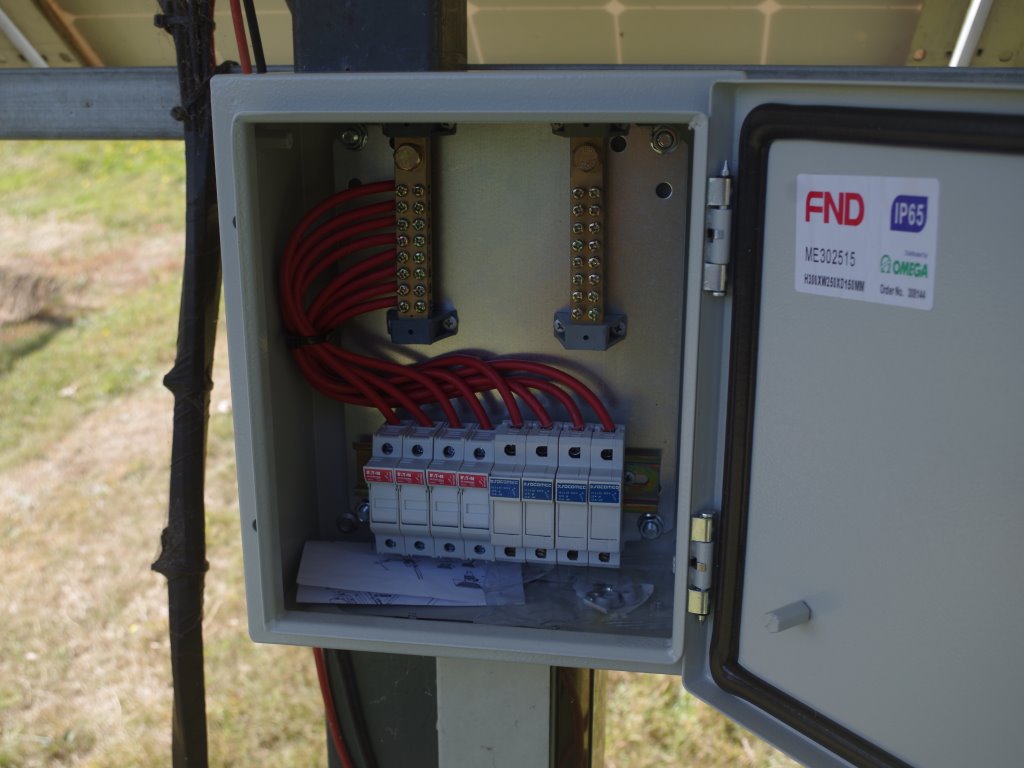
There is another hot day coming up later this week. I might finish the wiring job then. At least the solar panels provide some solid shade from the hot summer sun. As for the rest of the state, with those six transmission towers out of action, it makes a thoughtful person wonder how the grid will hold up on that day.
The warm summer days combined with smoke from distant bushfires has produced some notable sunsets:
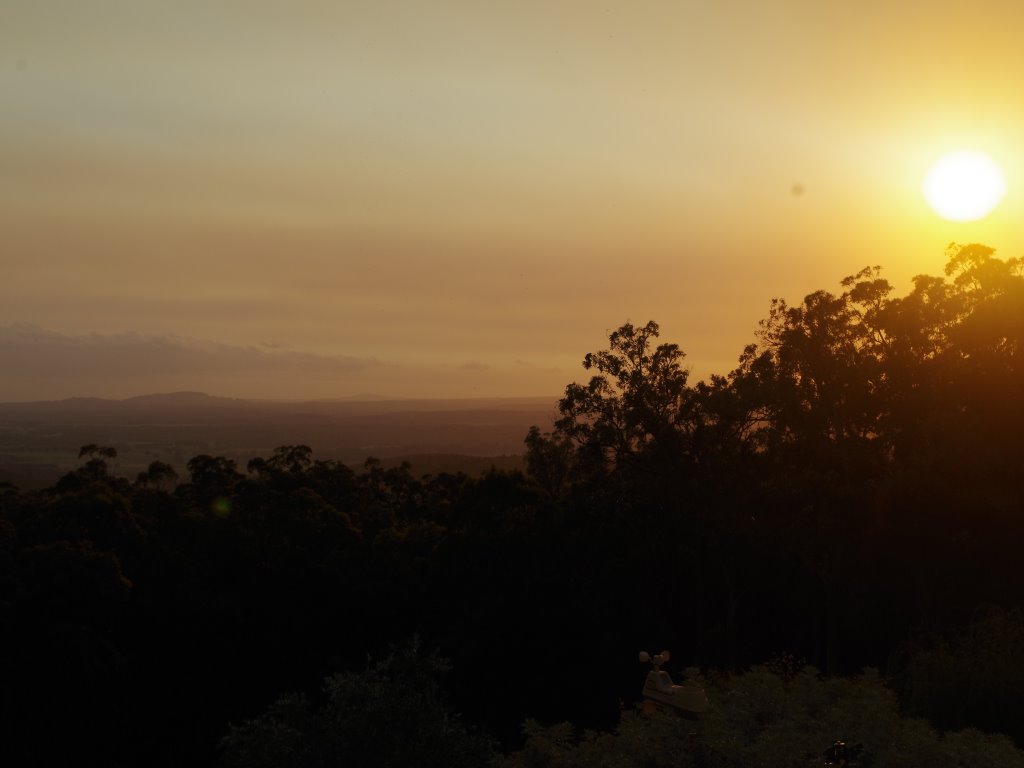
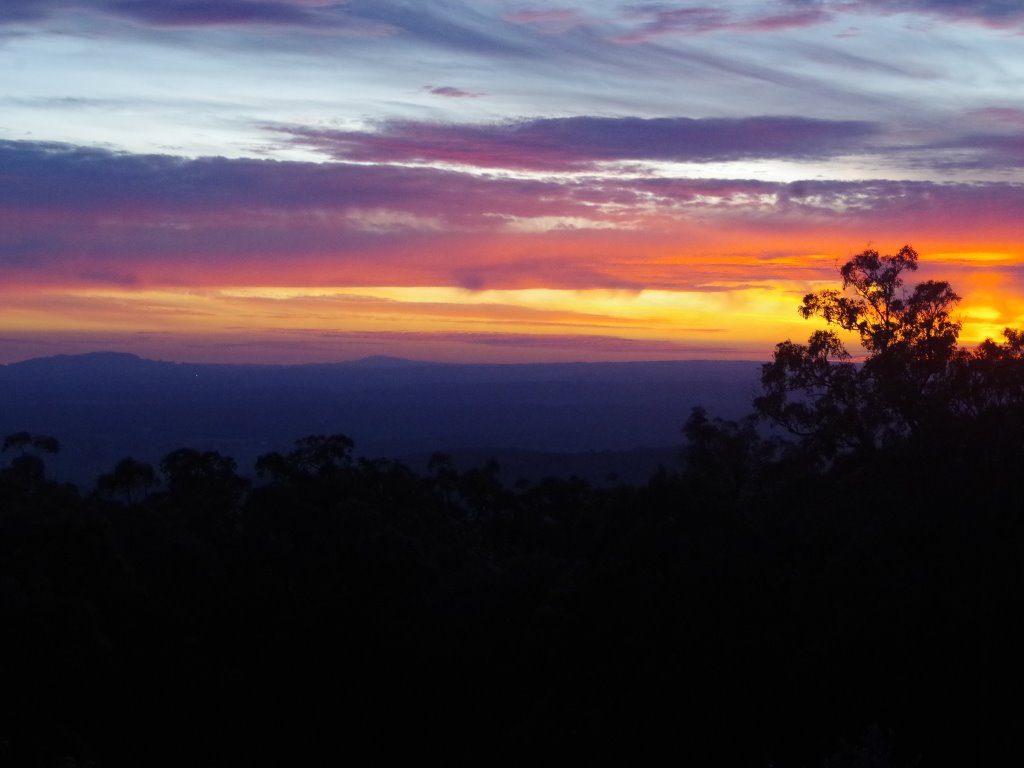
The steel rock gabion cage which was filled the previous week was sewn shut.
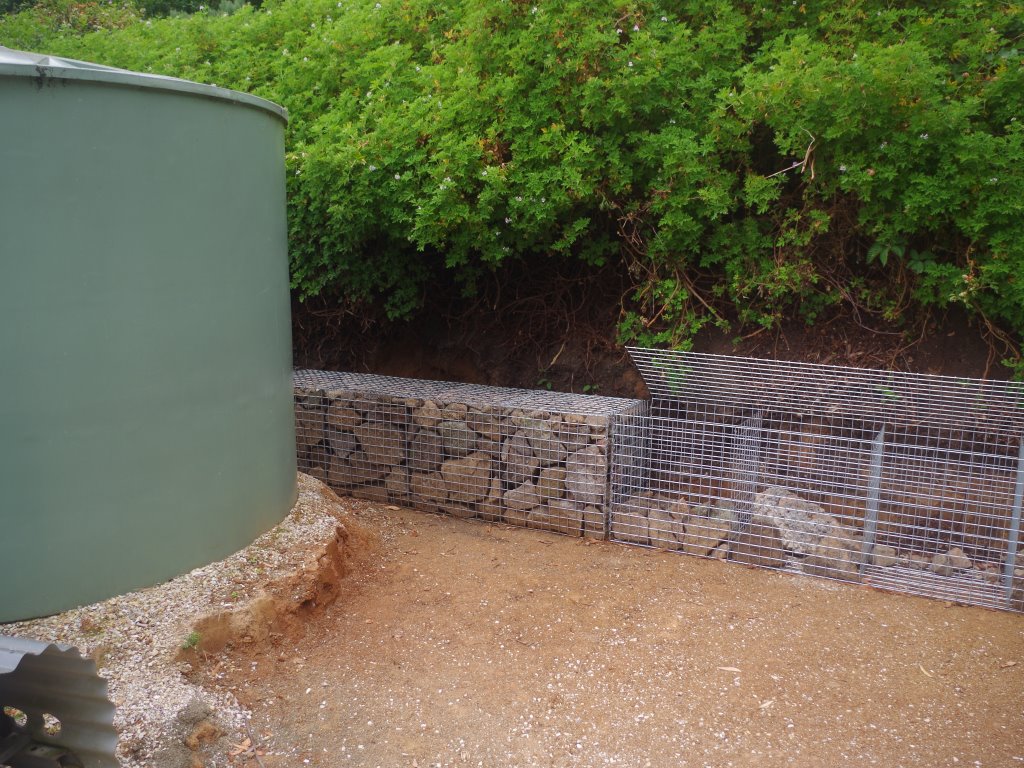
Work has continued on the low gradient path project. A day was spent scrounging large rocks. They were then all hauled back up the hill and added to the path project. The rocks are being used to retain soil on the downhill side of the path. The paths eat large rocks, which are now in rather short supply.
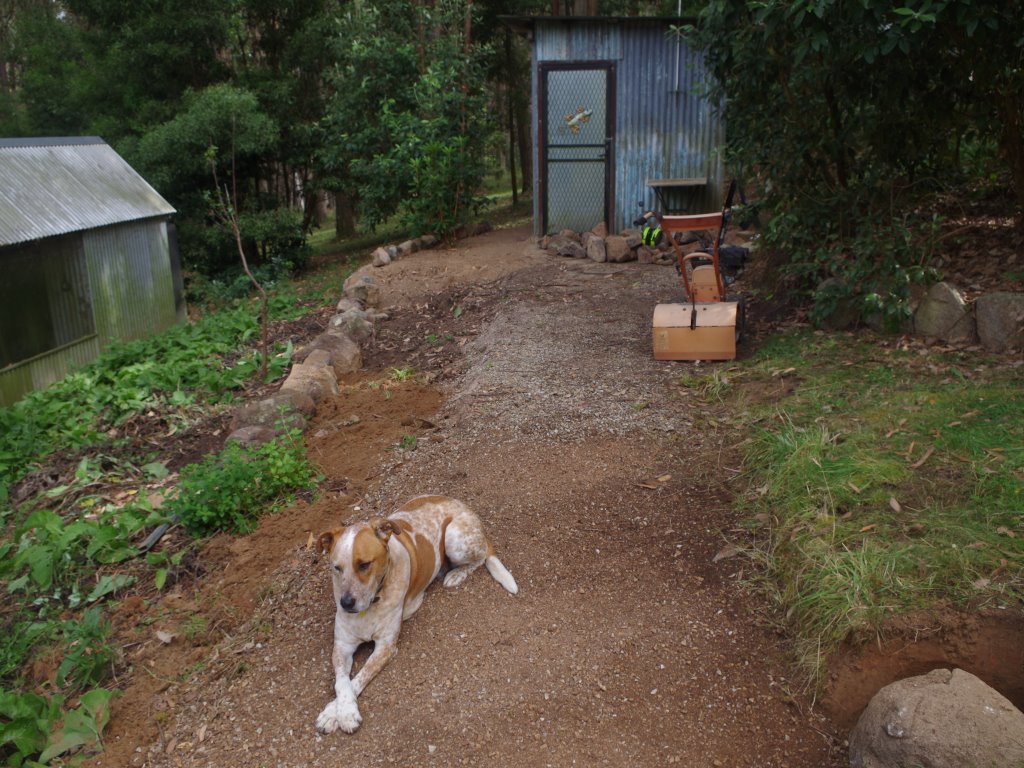
Another days work relocated soil from one end of the project and used it nearer to the shed so as to produce level ground. We’re now running short of spare soil too!
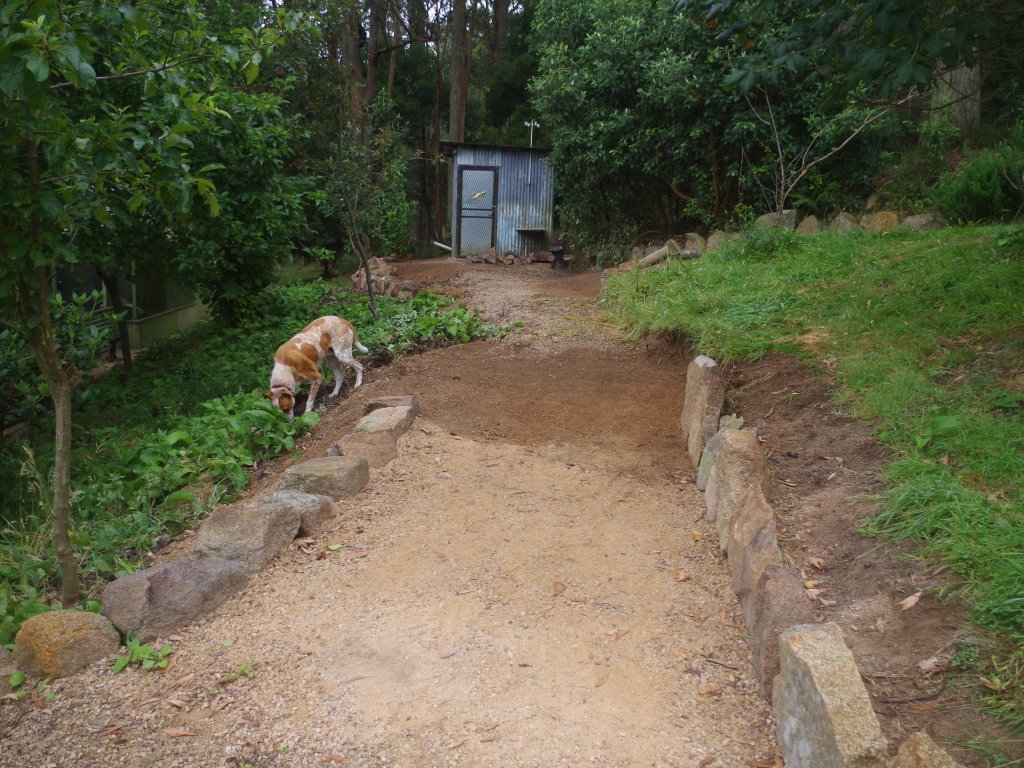
This project is being constructed by building either end, then meeting in the middle. Observant readers will note in the above image, just how narrow the former path was.
Near to the shed is a ramp leading from the path upwards into the orchard. The scary old rototiller was used to level out and smooth that ramp.

The fruit trees require regular pruning work. It’s easy enough to do and you get to choose how the tree will look and grow. A few hours was spent pruning this week. All of the branches were then fed into the scary old wood chipper. It makes great mulch for the garden beds.

After the heat, there was a brief but intense rainstorm which brought out the tree frogs. They hunt spiders and insects which are attracted to the lights of the house.

The bees are enjoying the massive feed provided by the flowering forest trees. The recent warmer weather has also meant that they’re now drinking water from the dogs water bowl. You can see the pollen on the water surface. Not ideal for hayfever sufferers.
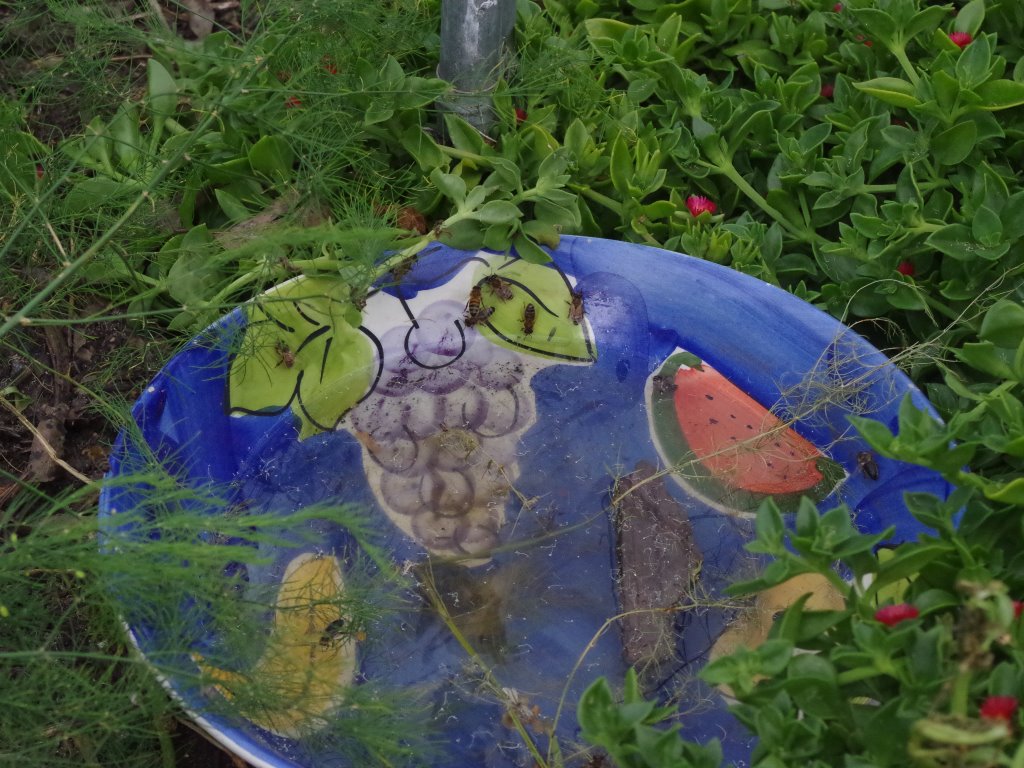
Despite the burst of summer heat, Autumn is fast approaching. Some of the leaves on the hops vines are beginning to turn.
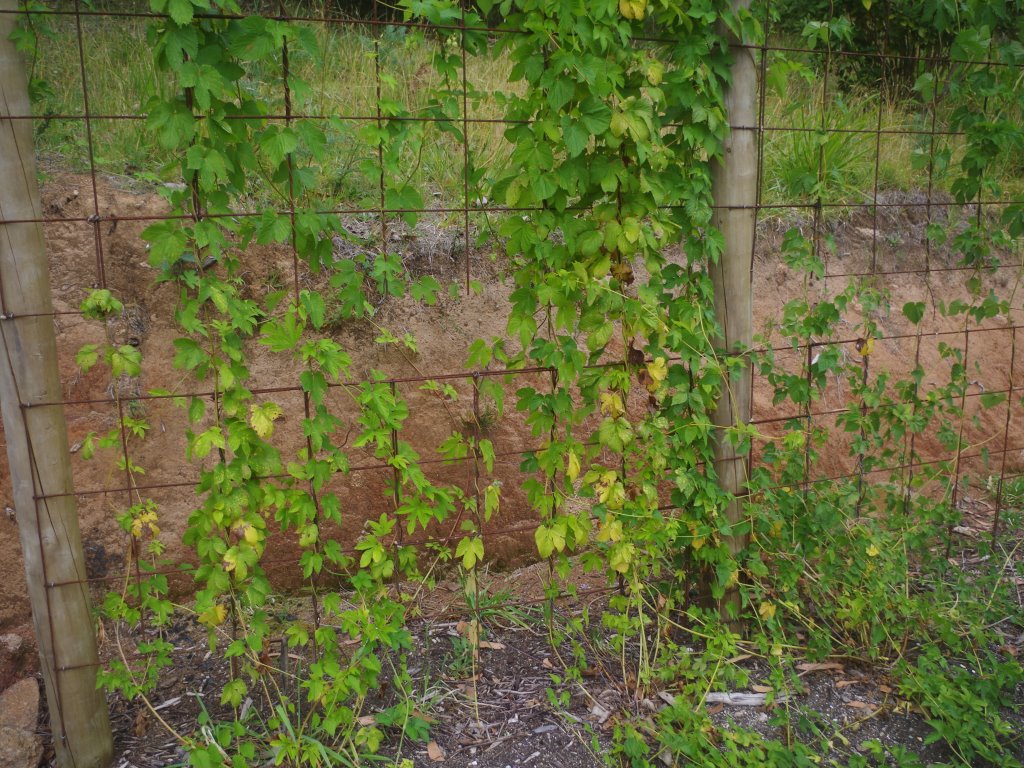
The pumpkin patch is producing really well this year. There are a couple of different varieties growing and we’re already consuming the smaller yellow globe squash variety (the orange ones).
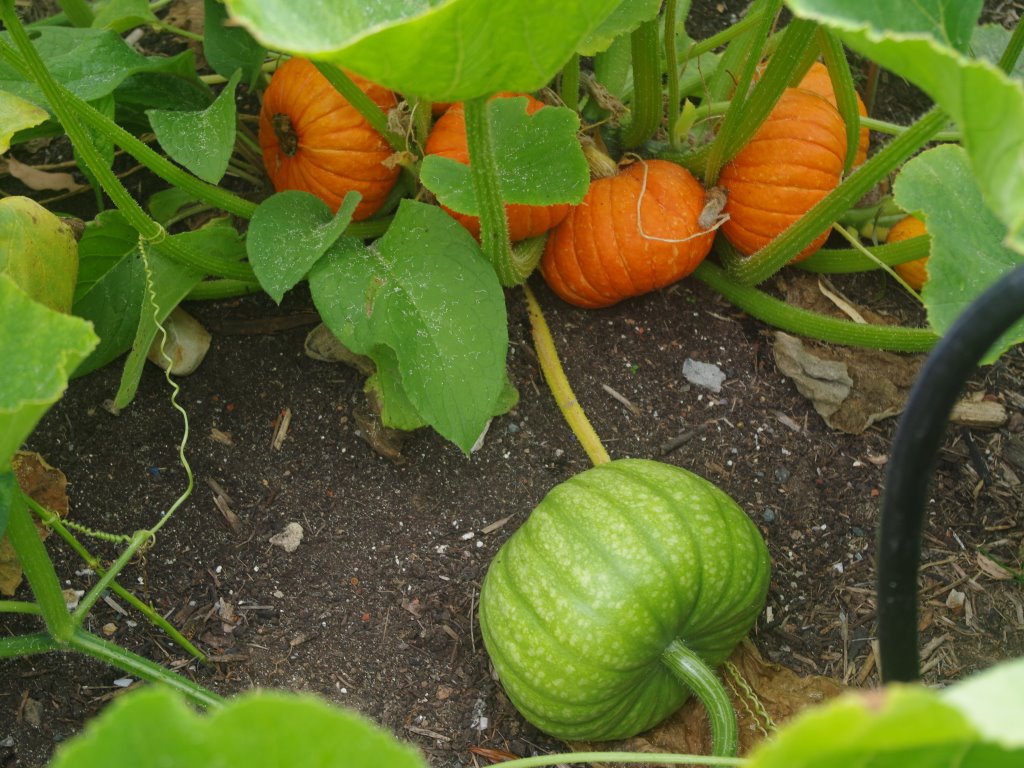
The fastest growing fig tree has produced a lot of fruit, none of which are presently ripe. A few weeks ago we picked a purple fig from a different tree and the taste was amazing. Figs here are usually turned into a very tasty jam.
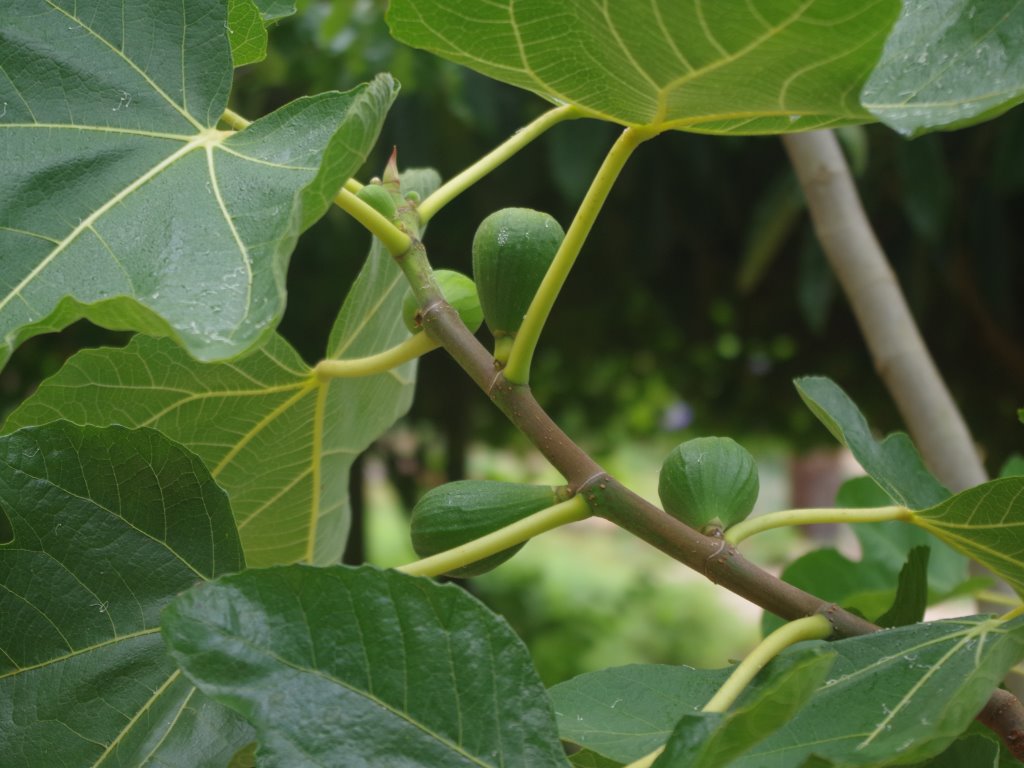
Pears have been plentiful this year. This week we picked a variety known as ‘Packham’s Triumph’. They were picked green and brought inside. I do hope that they soften and ripen off the tree, which they’re meant to do.
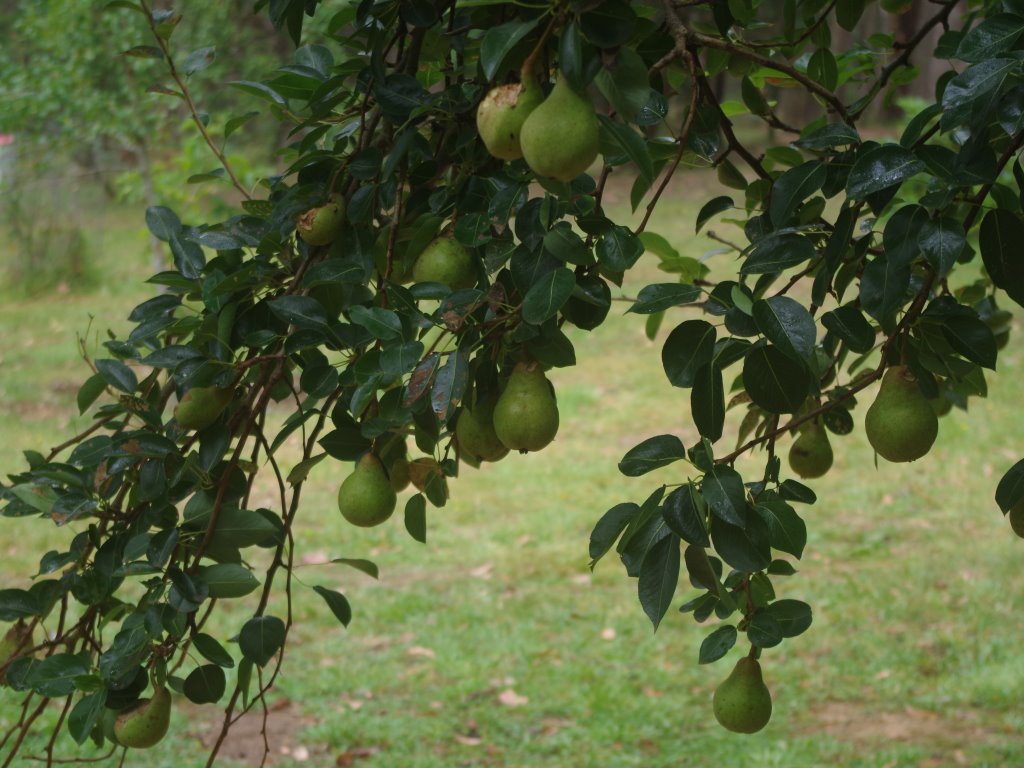
Most of the citrus trees are either very young, or have been moved during the past year to a more sunny location. One tree which did not require moving was an Imperial Mandarin. The tree is producing very well, although the fruit is a bit on the drier side. It still tastes great.

The grape vines are now about five years old, and the best performing plants are beginning to produce many clusters of grapes. The grapes are becoming tastier each week, although they will benefit from further warm weather and maybe a light frost.

Some of the beans have dried on the vine. We’ll pick the pods, shell the beans and store them away for winter use and also replanting the following season.
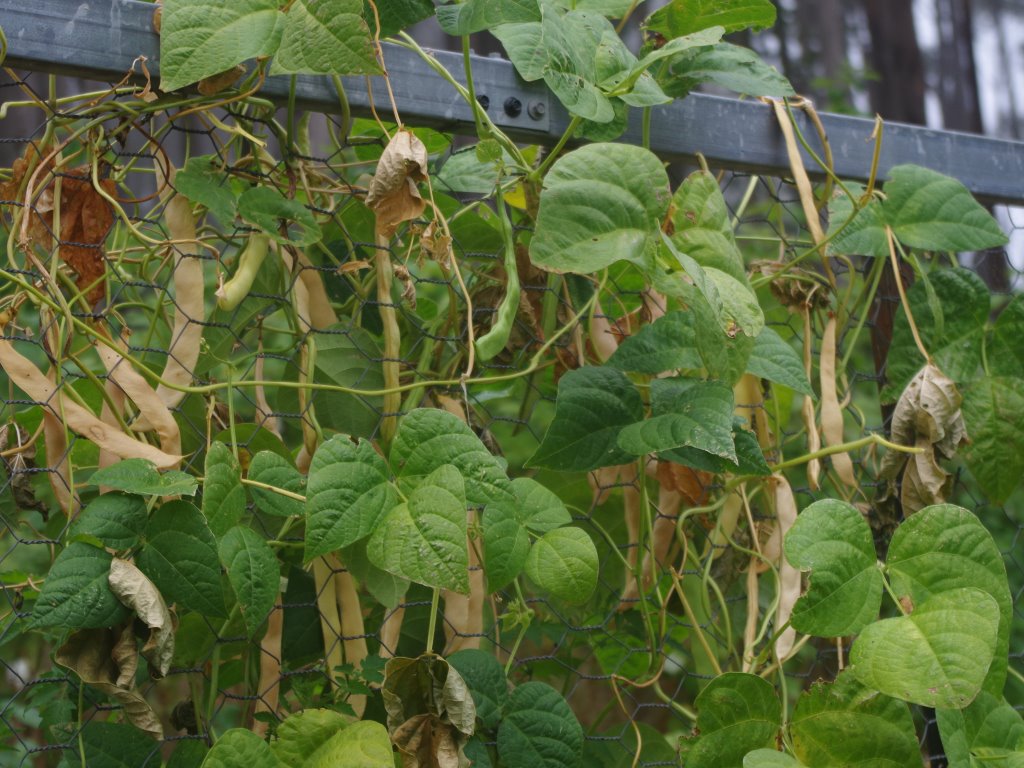
Onto the flowers:

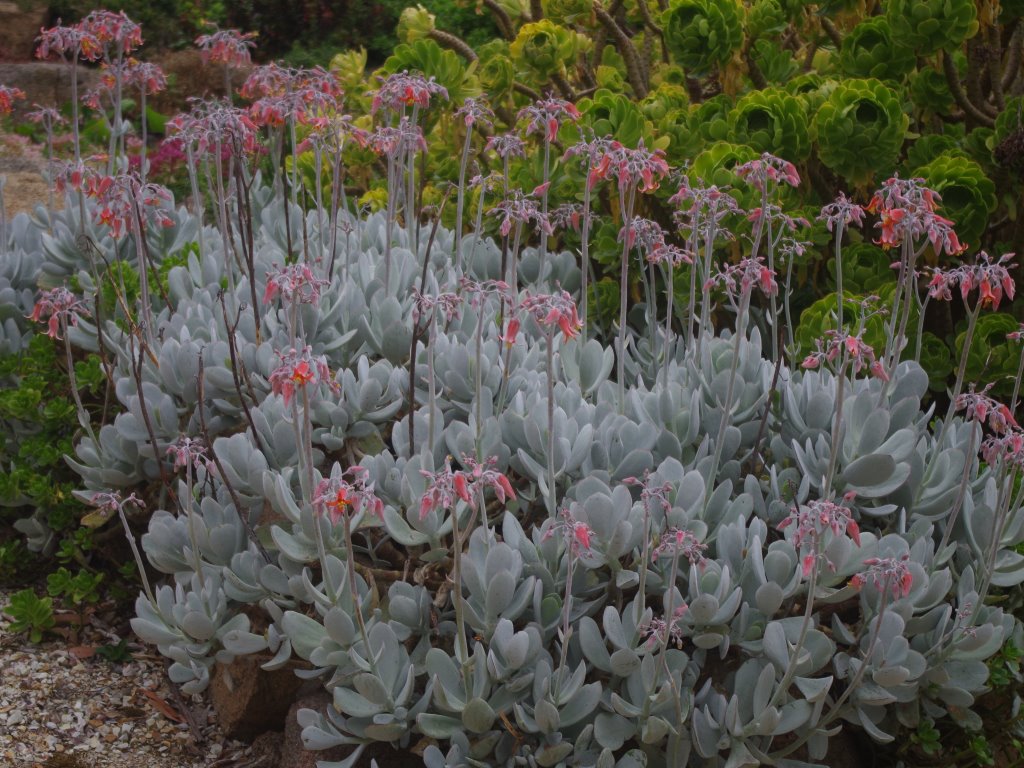

The temperature outside now at about 10am is 15’C (59’F). So far for last year there has been 207.2mm (8.2 inches) which is up from last weeks total of 196.0mm (7.7 inches)
